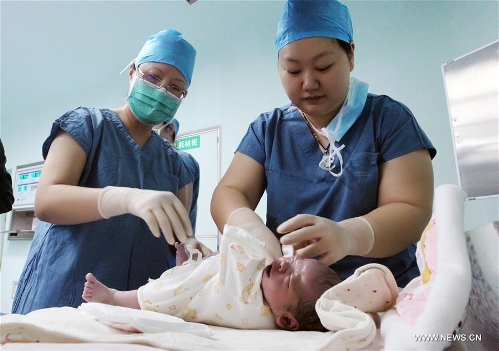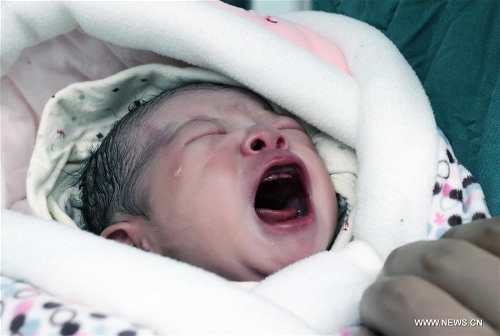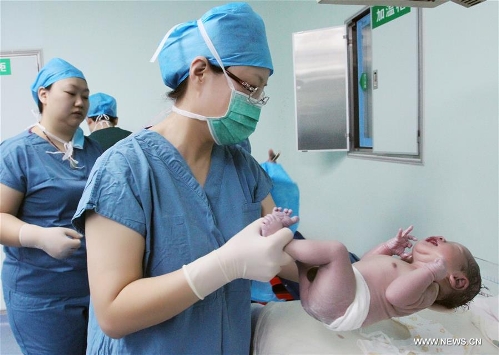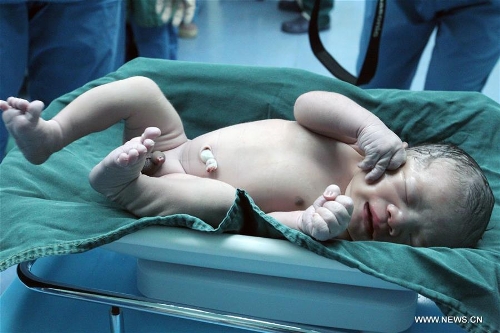HOME >> SCI-TECH
Chinese test tube baby born from frozen embryo after 12 years
Source:Xinhua Published: 2016-2-26 22:02:42
A healthy test tube baby was born Wednesday in northwest China's Shaanxi Province from an embryo frozen 12 years ago, a record on the Chinese mainland.
On Wednesday morning, a 40-year-old woman gave birth to her second son, weighing 3,440 grams at birth at Tangdu Hospital in provincial capital Xi'an.
She suffers from blocked fallopian tubes and polycystic ovary syndrome, a health problem that can affect a woman's fertility and pregnancy. She began trying to get pregnant through IVF in 2003. That year, doctors harvested 12 of her eggs and created 12 embryos with her husband's sperm. They implanted two fresh embryos to her womb, and froze the remaining seven that they considered viable.
Li gave birth to a healthy boy in 2004, and has since spent three yuan (around 50 cents) per day to store the embryos in the hospital in case of an emergency. Last year, when China dropped its one-child policy, she decided to have a second child.
Three embryos survived the thawing process. The two best were implanted in her womb, but only one survived.
"The success rate of implanted thawed embryos is more than 40 percent in our hospital, so doctors usually place more than one embryo at a time," said Wang Xiaohong, director of Tangdu Hospital reproductive medicine center.
"Our first boy is 12 years old now. The purpose of freezing the embryos was to have a second child some day, and luckily, we succeeded," said her husband.
Louise Brown, the first test-tube baby, was born in Britain in 1978, and about five million babies have been born worldwide through IVF since. The first test-tube baby on the Chinese mainland, Zheng Mengzhu, was born in 1988.
The infertility rate is high in China. China Population Association statistics from 2012 showed 40 million people with fertility issues, accounting for around 12.5 percent of the population at child-bearing age.
"IVF is one of the most effective assisted reproduction techniques for treating of infertility," said Wang.
Tangdu Hospital began to freeze embryos for infertile couples in 2003. Up to now, it has frozen around 100,000 embryos, thawed more than 27,000, and created 4,293 healthy test-tube babies.
Posted in: Biology



